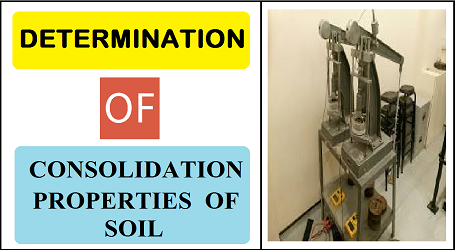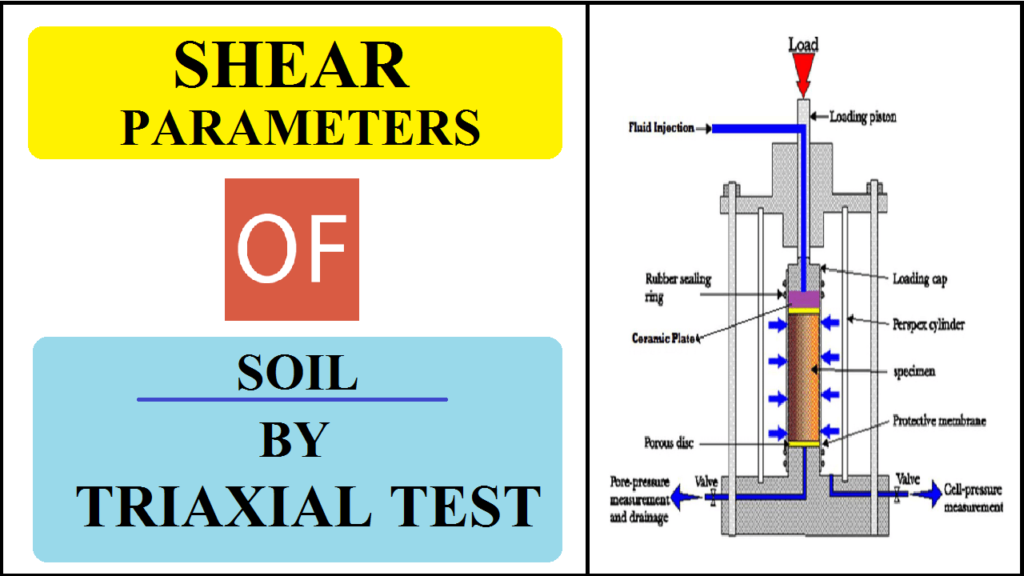Hello Friends, This is Mukesh from Learning Technology. I will tell you in today’s post, Determination of Consolidation Properties of Soil in a very easy way.
Contents
Object of Experiment
Determination of one-dimensional consolidation parameters of an undisturbed cohesive soil sample.
Standard Reference
IS 2720 (Part-15-1965)
Purpose of Experiment
This test is performed to determine the magnitude and rate of volume decrease that a laterally confined soil specimen undergoes when subjected to different vertical pressures. The data obtained can also be used to determine the coefficient of consolidation and the coefficient of secondary compression of the soil.
Apparatus
1. Consolidation cell
2. Ring
3. Porous stones
4. Loading frame and dial gauge
5. Trimming tools
6. Balance
7. Filter paper
8. Stopwatch
9. Apparatus for moisture content determination
Procedure
1. Clean the consolidation ring and measure its inside diameter, height, and weight.
2. Press the ring gently into the undisturbed soil sample until soil projects above the top of the ring, lift it up with extreme care, and trim the soil surfaces to flush both at the top and bottom of the ring. Remove any excess soil sticking outside, and weigh the specimen with a ring. Take samples from the remaining soil mass for the determination of initial water content.
3. Place soaked porous stones on the top and bottom surfaces of the soil specimen with filter paper discs in between. Press lightly to ensure that the stones adhere to the specimen.
4. Assemble the specimen carefully into the consolidation cell. Mount the cell on the loading frame, and set the dial gauge. Connect the system to a water reservoir, and allow the water to flow into till the specimen is completely covered and saturated.
5. Adjust and record initial dial gauge reading. Apply the normal load to give a pressure intensity of 1.0 Kg/cm2 on the soil specimen.
6. Note the dial gauge readings at an elapsed time of 0, 1/4, 1/2, 1, 2, 4, 8, 15, 30, 16 minutes, etc. up to 24 hours.
7. After recording the final time and dial reading, siphon water out of the consolidation cell, release the load, quickly disassemble the cell, remove the ring, and blot the specimen surfaces dry with paper.
8. Weigh the specimen with a ring, and place it in the oven for determination of final water content.
ALSO READ
- Specific Gravity of Soil Solids by Pycnometer
- Determination of Specific Gravity & Water Absorption of Aggregate
- Determination of Specific Gravity of Sand
- Determination of Fineness of Cement by Sieving
- Determination of Initial and Final Setting Time of Cement
- Compressive Strength Test of Cement
- Fineness Modulus of a Sample of Fine Aggregate
- Determination of Normal Consistency of Cement
- Specific Gravity Test for Bitumen
- Bitumen Penetration Test – Consistency Test
Observation and Calculation
The diameter of ring (mm) = ………………..
Area of the ring (mm2), A = …………………..
Height of ring (mm), H = ………………..
Before Test
Mass of ring + wet soil (g) = ………………..
Initial moisture content (%), Wi = ………………..
The initial height of the specimen (mm), Hi = ……………….
After Test
Mass of ring + wet soil (g) = …………………
Mass of dry soil (g), Ws = ………………..
Final moisture content (%), Wf = ………………..
Total change in height (mm) = ………………..
The final height of specimen (mm), Hf = ……………….
| Date | |
| Start time | |
| Pressure Intensity (Kg/cm2) | P1 |
|
Elapsed time (t) (min) |
Reading |
|
0 |
|
|
¼ |
|
|
½ |
|
|
1 |
|
|
2 |
|
|
4 |
|
|
8 |
|
|
15 |
|
|
30 |
|
|
60 |
|
|
24 hours |
Calculation
The square root of time fitting method, from the graph
The time corresponding to 90% consolidation, t90 = ………
Hence the coefficient of consolidation,
Cv = 0. 848H2/t90 = …………… cm2/min
Remarks
Write your own experience from the experiment






